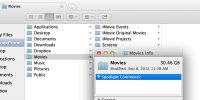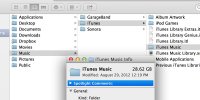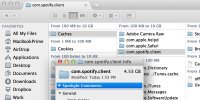New Startup disk Mac
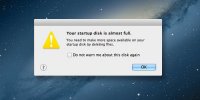 Don't panic. It happens to the best of us. Fortunately, you can likely fix it pretty easily. Years of use and abuse can leave a hard drive positively overflowing with random bits of stray data, read on to see how to find some free space when there doesn't seem to be any.
Don't panic. It happens to the best of us. Fortunately, you can likely fix it pretty easily. Years of use and abuse can leave a hard drive positively overflowing with random bits of stray data, read on to see how to find some free space when there doesn't seem to be any.
The Situation
If you haven't been there yet, you will be one day. One minute you're cruising along on your computer, importing those iPhone vacation photos or downloading your favorite band's new album, everything is just fine, the world is a friendly place.
Your startup disk is almost full, now what?
Then you see it. An unwelcome window that popped up out of no where to inform you that your startup disk is full. The world isn't friendly anymore. It's dark, crowded and claustrophobic. Your computer has reached the end of its limits and you don't have the cash to drop on a new one.
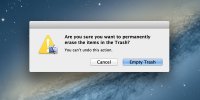 You used to treat your Mac like gold, but these days it's old, slow and full.
You used to treat your Mac like gold, but these days it's old, slow and full.
The cold hard truth is that you got sloppy. You used to treat your Mac like gold, but these days it's old, slow and full. You tell yourself that you need everything on it, but you know it's not true. Now you have no choice, you have to find ways to trim the fat. Where do you even start?
Before We Begin
Before we jump in and start cleaning up your startup drive, you're going to need a secondary storage drive. If you've got a decent drive lying in a closet or desk drawer, now is the time to grab it.
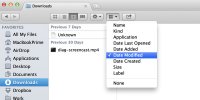 If you can afford it, grab a terabyte or two so you'll be set for a while.
If you can afford it, grab a terabyte or two so you'll be set for a while.
If you don't, you'll need to buy one. If you can afford it, grab a terabyte or two so you'll be set for a while. The cost sucks, but the two alternatives are buying a new machine and deleting important data.
Step 1. Empty Your Trash
That error message that popped up on your screen is a 911 call. Your computer is crying out for help and you need some quick victories to bring it back from the brink.
The quickest, easiest way to get your morbidly obese startup drive to drop a few pounds is to empty the trash. Lazy users who rarely empty their trash can have gigs and gigs of useless clutter eating up their disk space.
Empty your trash for a quick storage grab.
If this describes you, go to Finder, hit Command-Shift-Delete and don't look back. Now make this a daily or at least weekly practice.
By now, many of you will have regained some precious storage space already. That was easy! Don't get cocky kid, you're not out of the dark yet.
Step 2. Clear Out Downloads and Desktop
The trash isn't the only place on your computer that tends to serve as a catchall for random bits of data. For some users, the Desktop and Downloads folders are gold mines of files that were added in a hurry and never organized.
You might also like
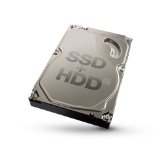
|
Seagate Laptop SSHD 1TB Solid State Hybrid Drive 6GB/s 2.5" - Internal Drive Retail Kit (STBD1000400) Personal Computer (Seagate)
|
Crowdfunding Pop-up by Invesdor (NewCo startups only) — ArcticStartup
The pop-up session is targeted at companies curious about equity crowdfunding as an avenue of financing for startup companies. It aims to provide information about equity crowdfunding and to give general guidance on how to organise a funding round.

|
Unlocking The Vault Software (Corporate Disk Company)
|

|
Les Sims 3: Jardin de style - French only (Outdoor Living Stuff) Video Games (EA)
|
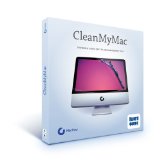
|
CleanMyMac - Lifetime License (Mac) Software (CleanMyMac Software)
|
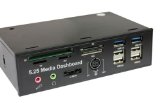
|
amtonseeshop New 5.25" Media Dashboard Multi-function Front Panel I/o E-sata to 2 X USB 3.0 Sd Tf Card Reader PC Accessory (amtonseeshop)
|
